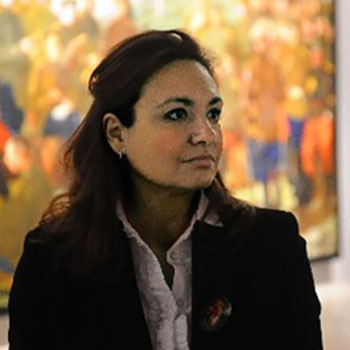
Giulia Fortunato
President of Fondazione Guglielmo Marconi
Guglielmo Marconi, born on April 25, 1874, in Bologna, is celebrated as the father of wireless communication
and radio and the first Italian to win the Nobel Prize for Physics. A self-taught innovator, Marconi
achieved the first wireless telegraphy transmission in 1895, at the age of 21, drawing from the work of
scientists like Temistocle Calzecchi Onesti and Heinrich Hertz. In 1897, he patented his invention in Great
Britain and founded the Wireless Telegraph and Signal Company Ltd, which later became The Marconi Company.
He can be considered the first Italian start upper.
Marconi's entrepreneurial spirit led to revolutionary advancements in communication, notably aiding maritime
rescues such as the Titanic disaster in 1912. He established the first transatlantic wireless contact in
1901 and launched the first public radiotelegraph service between Europe and America in 1907. His
contributions earned him the Nobel Prize in Physics in 1909.
A founding member of the BBC in 1922, Marconi's legacy in broadcasting endures. He passed away on July 20,
1937, and was honoured with a global two-minute radio silence. On the 150th anniversary of his birth, a
National Committee was established to celebrate his contributions with events from 2024 to 2026. Marconi’s
innovative spirit and entrepreneurial impact remain influential worldwide.
Giulia Fortunato is a cultural entrepreneur, sole Director and General Manager of CMS.Cultura srl, a company producing cultural content and organizing temporary exhibitions in Italy and abroad. She holds a degree in Ancient History, received with honours from the University of Bologna, and has completed courses in underwater surveying with the Italian Navy. Additionally, she earned a Master's degree in European Public Relations. Previously, she served as Communication and External Relations Manager at the Marino Golinelli Foundation, representing the Foundation in the Group for Correct Information and Communication on Biosafety and Biotechnologies within the National Committee for Biosafety and Biotechnologies under the Prime Minister's Office, and within the ECSITE network, the European network of Science Centres.She is a member of the Consilium of the Management Department at Ca' Foscari University in Venice.She has been appointed President of Fondazione Guglielmo Marconi, by decree of the Minister of Culture on January 2024. She has been also appointed President of the National Committee for the Celebrations of the 150th anniversary of Guglielmo Marconi's birth.
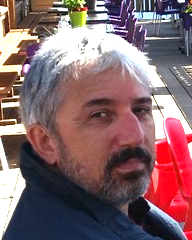
Mauro Bandinelli
Director of Electromagnetic Engineering Business Unit
IDS Ingegneria dei Sistemi SpA
Ingegneria Dei Sistemi (IDS), now as a part of FINCANTIERI NexTech company, is since 1981 active in high technology applications related to applied electromagnetism applications (RF and MW) and radar systems, in industrial areas ranging from naval to aerospace… and recently automotive and electronic systems.
The evolution of IDS along the decades, starting from a pure “engineering consultancy approach” up to the current “solution provider approach” is discussed, by showing how the continuous growing of market needs and the increasing international competition has been faced.
The usefulness of an “integrated approach”, based on synergic collaboration among consultancy capabilities at industrial level, high-fidelity modelling methods (digital twins) and specialized measurements systems… backed by specialist theoretical know-how (and therefore by strong and continuous collaborations with the academy) is described by referring to some practical cases from IDS experience portfolio.
A short list of requirements (or wishlist) for sustaining and improving such an approach even in the next future is finally suggested, for both technology producers and for professors who will have to train electromagnetism experts with the necessary blend of skills.
Mauro Bandinelli was born in Italy in 1959. He received university degree (cum laude) in Electronic Engineering from the University of Florence and the annual Italian Telecom Company award for his thesis work on “Numerical methods for antenna array design”, in 1986. Presently he is Director of the “ElectroMagnetic Engineering (EME)” Business Unit in IDS S.p.A (Italy), a FINCANTIERI NexTech company. His professional activity has been focused on different aspects of applied electromagnetism: development of numerical/asymptotic computational methods and CAE tools for electromagnetic modelling, Radar Cross Section (RCS) control on low observability platforms, EMC/EMI, system integration, antenna and smart materials design, propagation and scattering. M. Bandinelli is author and co-author of >120 papers at international meetings and on technical journals. M. Bandinelli has been involved and responsible of several R&D Italian and European R&D projects.
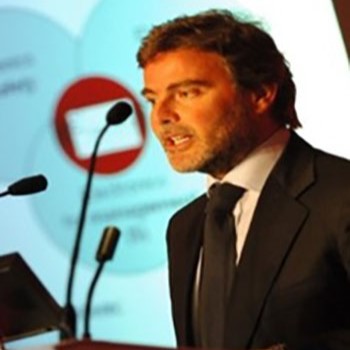
Angelo Pansini
General Management Business & Operations - Chief of Staff
Leonardo SpAs
This presentation provides elements of characterization of the operational and industrial scenarios, in order
to understand Leonardo's strategic posture and its future developments.
The central point is focused on the theme of digitalization which is favoring the introduction of
multi-domain applications based on complex architectures, the so-called System of Systems, whose
functionality is guaranteed by two critical enabling factors: the digital continuum which is able to break
down the barriers between domains and constitutes the glue among the various components of the System of
Systems and the cybersecurity that prevents the cybernetic vulnerability of the architecture.
Angelo Pansini is Chief Of Staff of the Leonardo Group Co-General Manager. From 2020 to
mid-2023 Angelo was the Commercial Planning and Offset Management SVP. From 2016 to 2019 Angelo was the
Director of Strategy & Competitive Analysis of Leonardo Land & Naval Business Unit, the same role he had in
the former Selex ES organisation since January 2013. In 2017 Angelo was appointed as the Leonardo
representative in the European Association of Aerospace and Defence Industries (ASD), in the Defence
Business Unit and thereafter in the Economic, Legal and Trade Commission (ELT). In 2012 Angelo was
responsible for the Overseas Companies of Selex Sistemi Integrati. In 2011 he was COO in Selex Sistemi
Integrati. In 2009 Angelo was appointed Defence Systems Business Unit SVP of SELEX Sistemi Integrati. In
2007, before being responsible for the above-mentioned operational activities, Angelo was appointed to the
role of SELEX Sistemi Integrati Strategy and Product Planning Director.
Angelo's career in Finmeccanica started in 1990 where he covered several senior positions in Alenia
Aeronautica and in Alenia Difesa, taking part in the establishment and start-up of AMS and MBDA. In 2001 he
was appointed Strategy Planning Director in the Avionics Division. In 2002 he moved to FINMECCANICA HQs as
Head of Group Strategy Planning and thereafter responsible for the Strategy Development Department,
Secretary of the Steering Committee and as Secretary of the Strategy Committee of the Board of Directors.
From 2005 to 2007 Angelo taught at the LUISS University of Rome, in the "JVs and other types of cooperation
among Companies" course.
Born in Naples, 63 years old, graduated cum laude in Aerospace Engineering. Angelo is married with Gabriella
and has two sons, Roberto and Carolina.
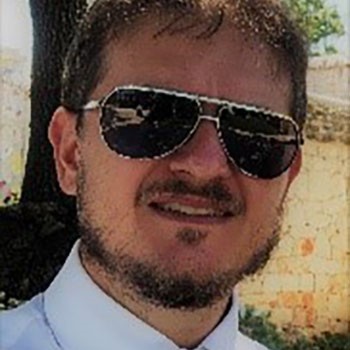
Domenico Vigilante
Electronic Division, CTO Land & Sea Business
Leonardo SpAs
Resident Space Objects (RSO), operational satellites and debris are man-made objects in orbit around the Earth. The number of such objects is now in the order of several million and with very variable dimensions. As results of past and on-going space missions, RSOs densely populate LEO (Low Earth Orbit) and MEO (Medium Earth Orbit) regimes, posing a serious threat for current and future space missions. In this context, radars play a crucial role in the LEO regime investigation due to their ability to observe the objects in all weather and all-day conditions. Moreover, the capability to transmit suitable signal to extrapolate the physical characteristics and the dynamics of the target makes radar an attractive solution to the problem of space objects detection, tracking and identification. Leonardo is playing a leading role in the research and innovation activities that are being conducted within the framework of EU consortia, where the major Industries, Research Centers, Universities and significant portion of the open innovation eco-system are collaborating in identifying new solutions and technologies.
Domenico Vigilante (born April 14, 1976) is an Italian electronic/mechanical engineer and industry manager. He is currently Head of Land and Sea Business R&D Department of the Leonardo Electronic Division, with specific focus on Radars and Command & Control systems. He received his Master Degree in Electronic Engineering from La Sapienza University of Rome in 2001, and his Master Degree in Engineering Science and Mechanics from Virginia Polytechnic Institute and State University in 2002. He works in Leonardo SpA since 2004, spending more than 10 years as a radar system analyst and designer. Domenico Vigilante is author and co-author of several papers on international journals and conferences, mostly in the field of radar systems and processing algorithms.
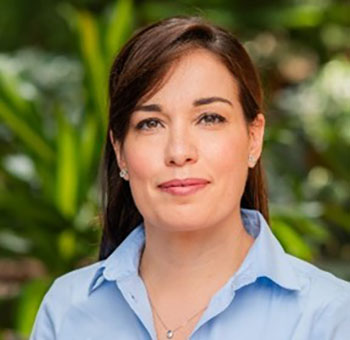
Silvia Zorzetti
Quantum Ecosystem Thrust Leader
Fermi National Accelerator Laboratory
Over the past decade, Quantum Information Science (QIS) has experienced significant growth, driven by technological advancements that have led to the development of the first generation of quantum processor units (QPUs). The SQMS Quantum Research Center, led by Fermilab, focuses on using three-dimensional bulk niobium superconducting microwave (SRF) cavities to mitigate quantum decoherence mechanisms. The flexibility in cavity design and geometry provides degrees of freedom in mode selection and microwave engineering, allowing the fulfilment of various goals and requirements. In this talk, we will present innovative designs and implementations based on SRF cavities to achieve ground-breaking advancements in QIS, including enhancing the computational capabilities of QPUs and establishing quantum networks and low-loss interconnects.
Silvia Zorzetti is a principal engineer at the Fermi National Accelerator Laboratory. She is currently serving as head of the co-design department at the SQMS Division. She also leads the ecosystem and workforce development thrust for the SQMS Center. Silvia joined Fermilab in 2017 as a Bardeen Fellow. While earning her Ph.D. in electronics engineering and information technology from the University of Pisa, she was a Marie Skłodowska-Curie Fellow at the European Council for Nuclear Research (CERN). Dr. Zorzetti’s research focuses on quantum systems to enable applications on long-coherence quantum devices. In 2023, she received the Department of Energy Early Career Award for her research in quantum transduction.
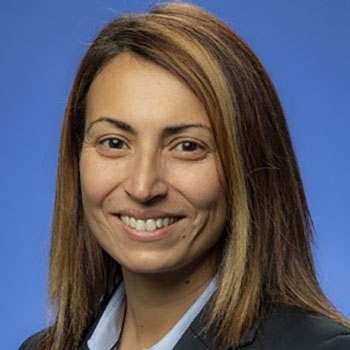
Anna Grassellino
Director of
Superconducting Quantum Materials and Systems Center
The Superconducting Quantum Materials and Systems Center (SQMS) is one of the five national quantum
information science research centers of the U.S. Department of Energy. SQMS brings the power of DOE
laboratories, together with industry, academia and other federal entities, to achieve transformational
advances in the major cross-cutting challenge of understanding and eliminating the decoherence mechanisms in
superconducting 2D and 3D devices, with the final goal of enabling construction and deployment of superior
quantum systems for computing and sensing. SQMS combines the strengths of an array of experts and
world-class facilities towards these common goals.
In this talk I will describe the progress made in understanding and mitigating decoherence in
superconducting quantum devices. SQMS is leading the way in extending coherence time of superconducting
quantum systems thanks to world-class materials science and through the world leading expertise in
superconducting RF cavities which are integrated with 2D chips.
Leveraging the advances in device coherence, researchers are pursuing devices integration, quantum controls
and millikelvin cryogenics developments for 2-D and 3-D superconducting architectures. SQMS is building and
deploying a beyond-state-of-the-art quantum computer and novel quantum sensors at Fermilab. The QPU unique
high connectivity will provide unprecedented opportunity to explore novel quantum algorithms. Advances in
prototypes based on 2-D and 3-D architectures, enabling new quantum simulation and sensing for science
applications, will be presented.
Anna Grassellino is the Director of the National Quantum Information Science SQMS Center, a Fermilab Senior
Scientist and the head of the Fermilab SQMS division. Her research focuses on radio frequency
superconductivity, in particular on understanding and improving SRF cavities performance to enable new
applications, spanning from particle accelerators to detectors to quantum information science.
Grassellino is a fellow of the American Physical Society and the recipient of numerous awards for her
pioneering contributions to SRF technology, including the 2017 Presidential Early Career Award, the 2017
Frank Sacherer Prize of the European Physical Society, the 2016 IEEE PAST Award, the 2016 USPAS prize, a DOE
Early Career Award and the New Horizons in Physics Prize by the Breakthrough Foundation. She holds a Ph.D.
in physics from the University of Pennsylvania and a master’s of electronic engineering from the University
of Pisa, Italy
.